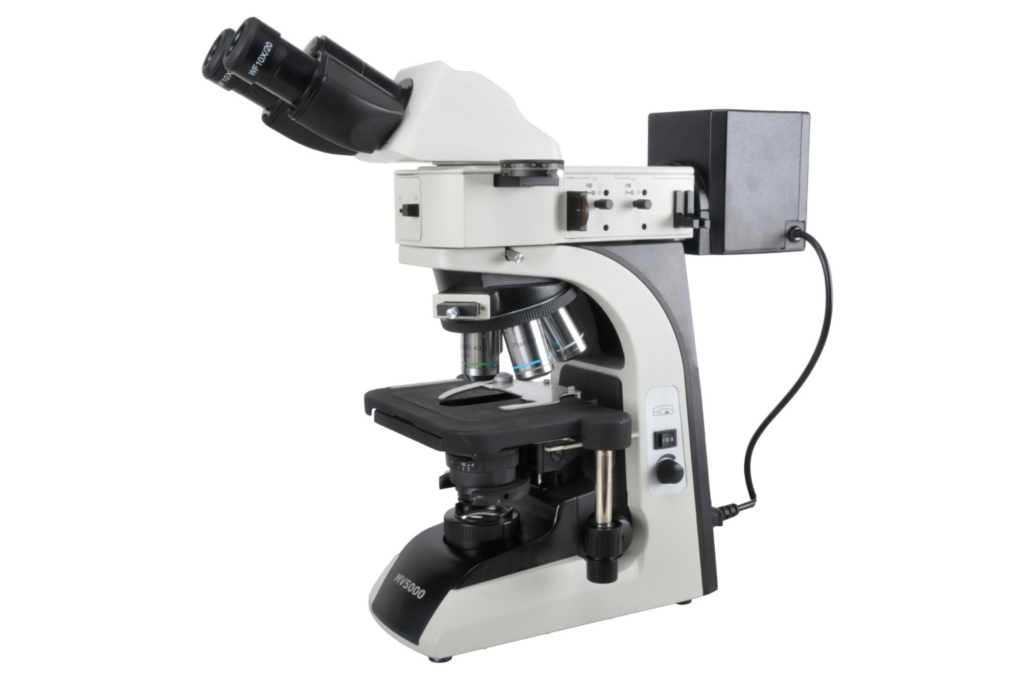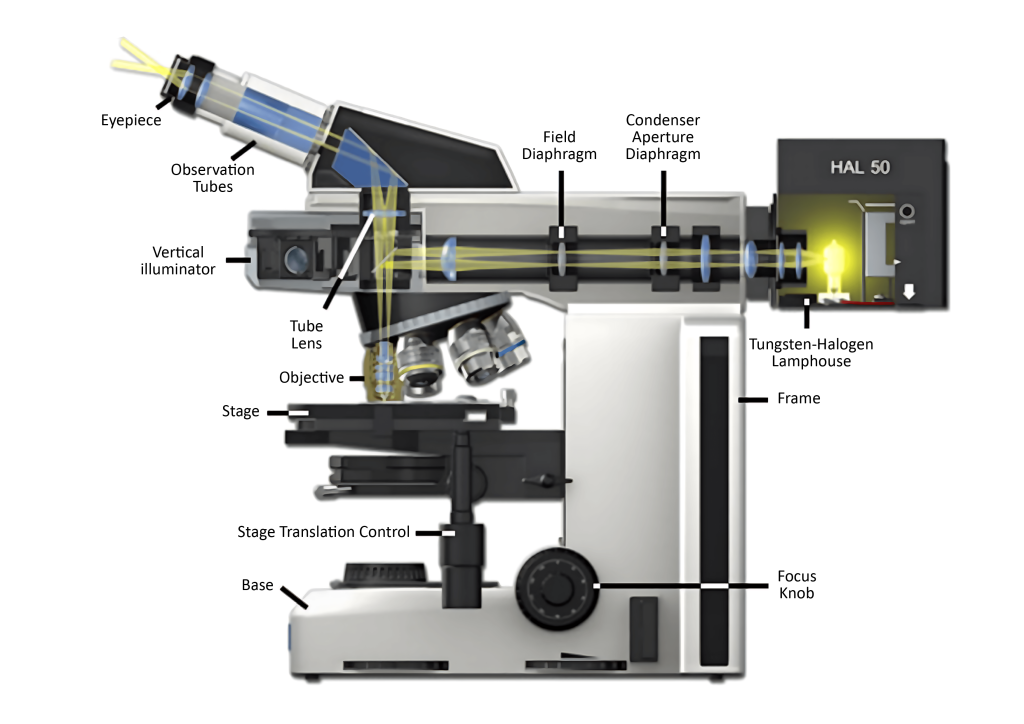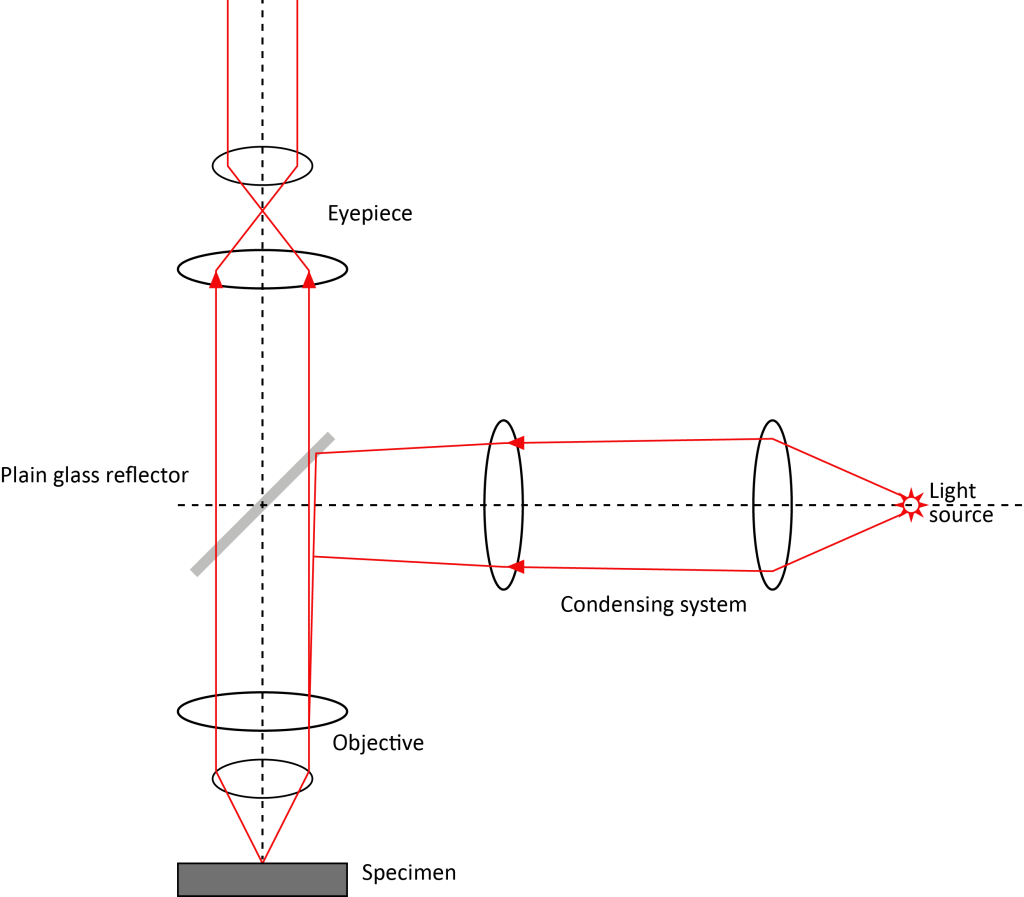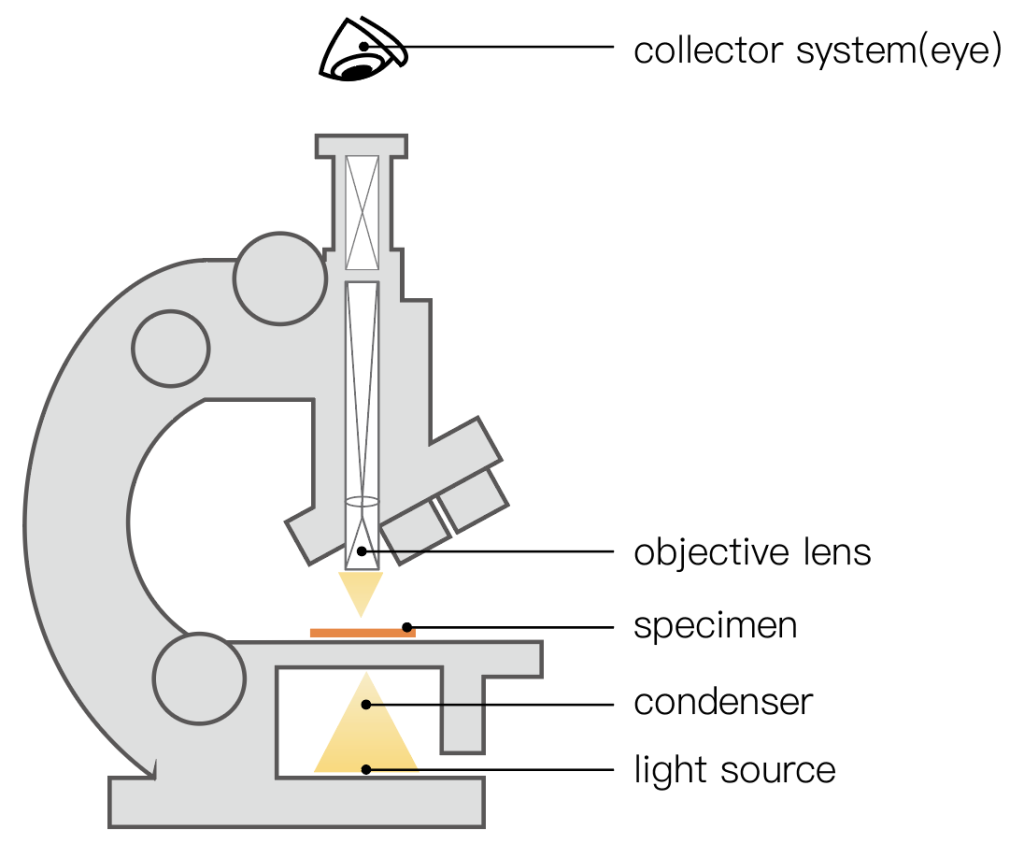1. What is a metallographic microscope?
A metallographic microscope is a reflected light microscope, a microscope used to study the internal structure of metals and alloys. It mainly studies the changes in the internal structure of metals and alloys caused by chemical composition, condensation, rolling, welding, heat treatment, etc., and their response to them. The effects of physical, chemical, and mechanical properties are studied. With the continuous emergence of new materials and new fields, the current research scope of metallographic microscopes is no longer limited to metals and alloys.

2. Principle of metallographic microscope
Because light cannot pass through a metallographic specimen, it must be illuminated onto the surface and ultimately returned to the microscope objective via specular or diffuse reflection, which is most commonly referred to as vertical illumination compared to transmitted illumination through the specimen.

The optical path of reflected light in a metallographic microscope starts from the illumination light emitted by the reflected light source. This light then passes through the condenser lens and enters the vertical illuminator, controlled by the aperture diaphragm and field diaphragm. After passing through the vertical illuminator, the light is reflected through the objective lens by a beam splitter (a half mirror or an elliptical-shaped first mirror) tilted at an angle of 45 degrees to illuminate the specimen. Light reflected from the specimen surface re-enters the objective lens and enters the eyepiece tube, where it is directed to the eyepiece or photomicrography port.

3. Three differences between ordinary microscopes and metallographic microscopes
A metallographic microscope is an ordinary optical microscope that can add some auxiliary functions, such as bright field, dark field, polarized light, differential interference, etc. What is the difference between a metallographic microscope and an ordinary microscope?

The difference is that due to different samples, metallographic microscopes and other metal materials that require metallographic examination can use polarizing microscopes, bioluminescent labeled fluorescein microscopes, and MICR large frames to observe ore types.
Three points of difference:
- The illumination method of a microscope is usually epi-illumination, that is, the light source is projected on the sample through the objective lens;
- The light source of the microscope is ultraviolet light, which has a shorter wavelength and higher resolution than ordinary microscopes;
- The microscope has two special filters, the one in front of the light source is used to filter out visible light, and the one between the eyepiece and objective lens is used to filter out ultraviolet rays to protect the human eye. Fluorescence microscopy is used to study the absorption and transport of substances within cells, as well as the distribution and positioning of chemical substances.